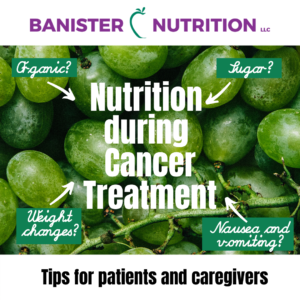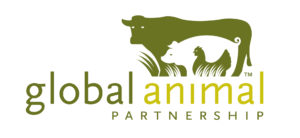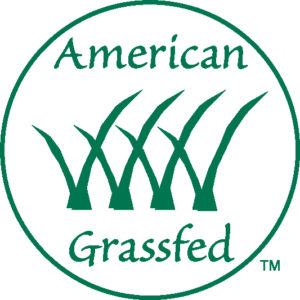Nutrition During Cancer Treatment
Nutrition plays an important role in overall cancer treatment and healing.
Cancer treatments include chemotherapy, radiation therapy, surgery, immunotherapy, and T-cell therapy. No matter which cancer diagnosis, mechanism of onset, or even genetic predisposition, a nutritious diet, together with regular physical activity, is vital for not only cancer prevention but also for treatment and recovery.
Should I only eat organic foods?
Let us first mention: the benefits of eating fruits and vegetables far surpass any risk associated with pesticides- organic or not.
Cancer is a costly disease. Buying organic foods also be costly. Organic foods can be nutritious, however, there is no strong evidence to support organic being more nutritious than conventionally grown foods.
Organic foods are produced using farming practices that restrict the use of certain but not all pesticides and fertilizers. Most synthetics are prohibited in organic—unless there is no naturally occurring alternative.
Organic or not, fruits and vegetables properly cleaned can be safely consumed during cancer treatment Neutropenic patients should talk to their dietitian and oncologist before consuming raw fruits and vegetables.
Does sugar feed cancer?
Nutrients feed cells. Therefore, all nutrients- carbohydrates, proteins, and fats feed cancer.
This myth comes from two facts that alone are true, but together, they are out of context. 1) Excess consumption of high-sugar foods can lead to excess adipose tissue and 2) Increased body fat can increase the risk of developing diseases, such as cancer.
Carbohydrates come from fruits, vegetables, grains, dairy, and of course, sugar. Although the science is much more complex, when we consume carbohydrates, our body breaks this down to be used for energy. Glucose is the primary source of energy our brains and muscles use for energy.
Carbohydrates are the ideal source of energy our bodies use, although, when there are not enough carbohydrates on board, our bodies resort to using fat and protein.
We must remember to look at the source of sugar! Highly-refined, high-calorie foods that may contain added sugars are traditionally low in nutrients and dietary fiber. Foods like these have been associated with insulin resistance and increased risk of developing diseases.
Consuming carbohydrate sources such as fruits and vegetables, grains, and dairy means a diet rich in vitamins,
minerals, and phytochemicals that can help to defend the body against cancer and other diseases.
How do I prevent weight loss?
Maintaining weight can seem like an uphill battle during chemotherapy. On days when you have an appetite, try to get enough calories, protein, vitamins, and minerals. This is important in controlling weight loss. Chemotherapy and other medications can cause loss of appetite and dysgeusia (altered taste). Some tips to prevent weight loss and increase calorie content include:
- Replacing water or broth with milk in soups and cooked cereals
- Adding butter, salad dressing, and oils to vegetables
- Adding extra protein to soups by slicing cooked egg white into the soup
- Eating when you do have an appetite
If you are doing your treatment at an in-patient facility, your weight is monitored very closely, and the oncology dietitian works closely with your oncologist to prevent extreme and rapid weight loss.
How do I deal with nausea and vomiting?
There is some evidence that ginger may be helpful in further reducing or eliminating nausea and vomiting during and after chemotherapy treatments. Some patients find chewing gum helps with reducing nausea and vomiting. If the smell of food makes you nauseous, try avoiding strong spices and seasonings. Call in some help from friends and family members if preparing foods makes it hard to have an appetite.
Cancer is a disease that impacts everyone in the patient’s support network. If you have questions about nutrition during cancer treatment and recovery, contact our dietitians at Banister Nutrition at 405-755-7561.
KD


 and foraging different areas of farms but are still fed grain-based feed when necessary. Locally, The Wedge Pizzeria in OKC, uses a third party certified pasture-raised chicken on their pizza! Look for Global Animal Partnership (GAP) and Animal Welfare Approved (AWA) certifications on these meats.
and foraging different areas of farms but are still fed grain-based feed when necessary. Locally, The Wedge Pizzeria in OKC, uses a third party certified pasture-raised chicken on their pizza! Look for Global Animal Partnership (GAP) and Animal Welfare Approved (AWA) certifications on these meats. goats
goats farmers and producers spend years working to acquire. USDA organic certification indicates the product is free from genetically modified organisms (GMO’s). For produce, synthetic fertilizers, pesticides or herbicides are not allowed and the same guidelines apply for areas organic-meat animals graze on. Hens must also be fed non-GMO feed and cannot be given hormones or antibiotics.
farmers and producers spend years working to acquire. USDA organic certification indicates the product is free from genetically modified organisms (GMO’s). For produce, synthetic fertilizers, pesticides or herbicides are not allowed and the same guidelines apply for areas organic-meat animals graze on. Hens must also be fed non-GMO feed and cannot be given hormones or antibiotics.